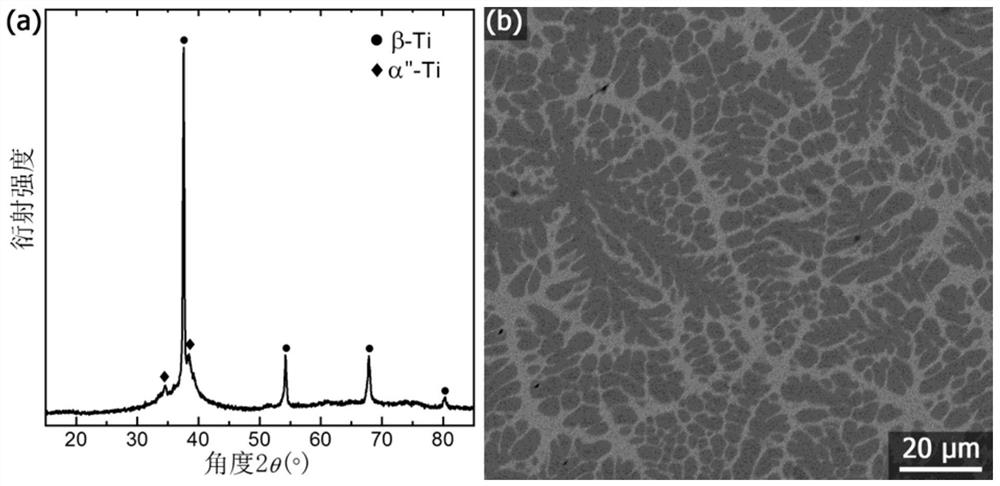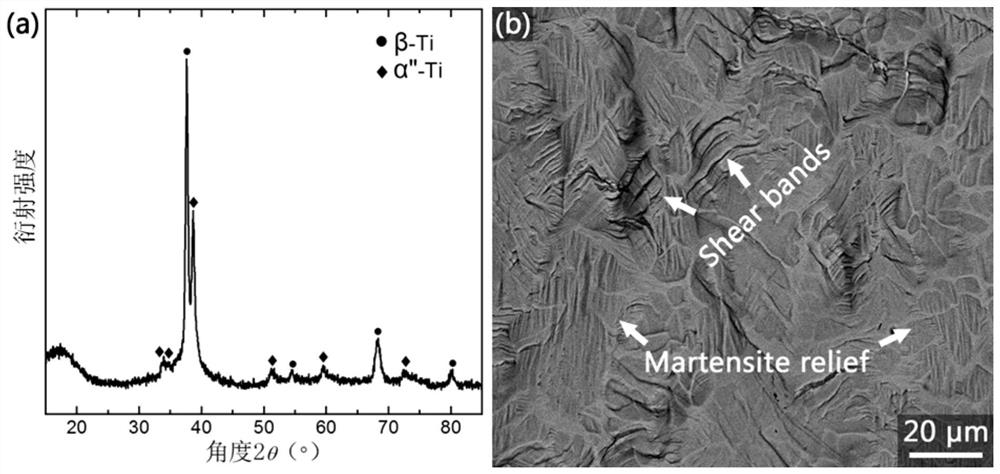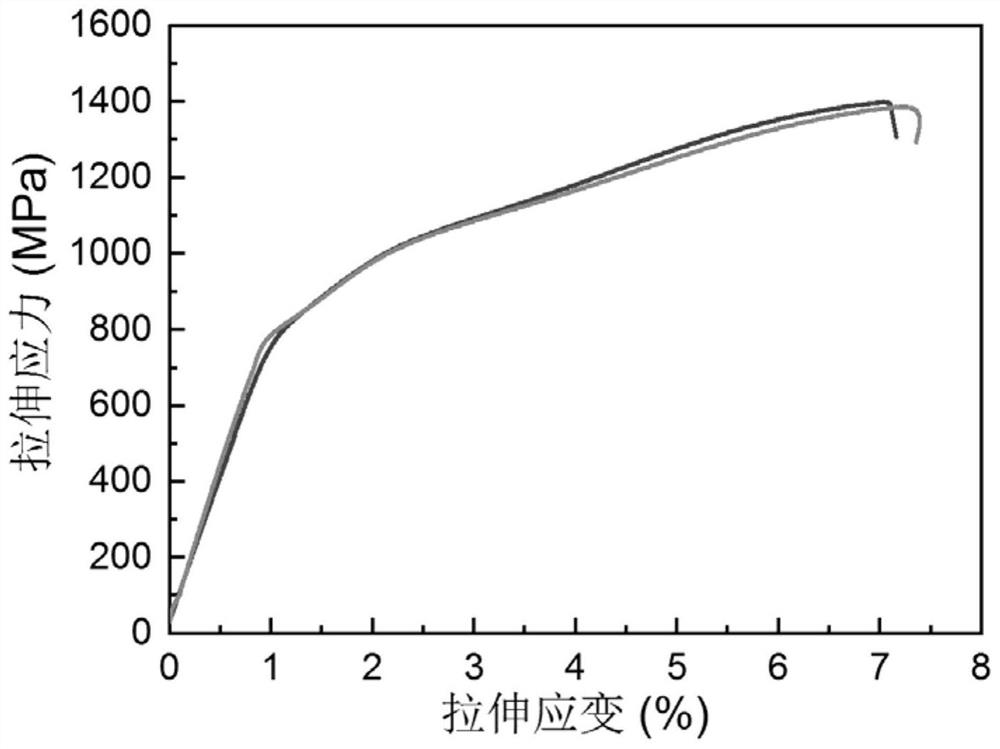A method to improve the mechanical properties of amorphous endogenous composites by driving the recovery of amorphous matrix structure through the shape memory effect
A memory effect, composite material technology, applied in the field of amorphous alloys and endogenous composite materials, can solve the problems of insufficient softening effect, weak hardening ability, etc., to achieve simple implementation, significant improvement in mechanical properties, and improved mechanical properties. Effect
- Summary
- Abstract
- Description
- Claims
- Application Information
AI Technical Summary
Problems solved by technology
Method used
Image
Examples
Embodiment 1
[0050] In this embodiment, the production diameter is 12 mm by the copper mold casting, and the nominal component is Ti. 47.4 ZR 34 Cu 6 Bo 12.6 Amorphous endogenous composite material, X-ray diffractive spectrum and scanning electron microscopy figure 1 Indicated. The ingredients of the endogenous metample β are Ti 63.2 ZR 34.7 Cu 2.1 Uniformly distributed among the amorphous substrates in the amorphous matrix, and the volume fraction is about 60%. From the alloy rod tab, the tensile tensile sample is tested, the length of the drawing sample is 14 mm × 2 mm × 0.8 mm. The strain rate of the tensile test is 5 × 10 -4 s -1 . Ti 47.4 ZR 34 Cu 6 Bo 12.6 The tensile stress of the amorphous endogenous composite material - strain curve image 3 As shown, its yield strength is approximately 780 MPa, and the tensile processing hardening capacity is exhibited after yield, and the stretch breakage strain is 7.2 ± 0.2%. Ti 47.4 ZR 34 Cu 6 Bo 12.6 Amorphous internal composites are very good for...
Embodiment 2
[0053] In this embodiment, the production diameter is 12 mm by the copper mold casting, and the nominal component is Ti. 47.4 ZR 34 Cu 6 Bo 12.6 Amorphous endogenous composite material, X-ray diffractive spectrum and scanning electron microscopy figure 1 Indicated. The ingredients of the endogenous metample β are Ti 63.2 ZR 34.7 Cu 2.1 Uniformly distributed among the amorphous substrates in the amorphous matrix, and the volume fraction is about 60%. From the alloy rod tab, the tensile tensile sample is tested, the length of the drawing sample is 14 mm × 2 mm × 0.8 mm. The strain rate of the tensile test is 5 × 10 -4 s -1 . Ti 47.4 ZR 34 Cu 6 Bo 12.6 The tensile stress of the amorphous endogenous composite material - strain curve image 3 As shown, its yield strength is about 780 MPa, and the tensile processing hardening capacity is demonstrated, and the tensile breaking strain is 7.2 ± 0.2% (see attached. image 3 . Ti 47.4 ZR 34 Cu 6 Bo 12.6 Amorphous internal composites are very g...
PUM
| Property | Measurement | Unit |
|---|---|---|
| yield strength | aaaaa | aaaaa |
| tensile strain at break | aaaaa | aaaaa |
Abstract
Description
Claims
Application Information
 Login to View More
Login to View More - R&D
- Intellectual Property
- Life Sciences
- Materials
- Tech Scout
- Unparalleled Data Quality
- Higher Quality Content
- 60% Fewer Hallucinations
Browse by: Latest US Patents, China's latest patents, Technical Efficacy Thesaurus, Application Domain, Technology Topic, Popular Technical Reports.
© 2025 PatSnap. All rights reserved.Legal|Privacy policy|Modern Slavery Act Transparency Statement|Sitemap|About US| Contact US: help@patsnap.com



